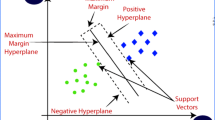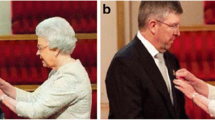Abstract
Ideally, sophisticated image forgery methods leave no perceptible evidence of tampering. In response to such stringent context, researchers have proposed digital methods to detect such indiscernible tampering. In this paper, we present a blind image forgery detection method that uses a steerable pyramid decomposition technique and copulas ensemble. This method can accurately detect forgery in regions as small as 16 pixels, which is the smallest size reported in the literature with perfect accuracy. The proposed method is innovative in that: (i) it works on both grey scale images as well as colored images; (ii) the copula functions are used to calculate image similarity (or dissimilarity) which represents image forgery; (iii) the precision of the copula results on the image steerable pyramid bands motivated the idea of selecting the band with minimum number of elements to represent the block(s) in the image, which is 16 elements, in our case. The idea of using smallest number of elements to represent the blocks can significantly speed up the method as the testing is done on such small number of pixels; finally (iv) this method can be applied to more than one kind of image forgery with similar results. To verify the performance of the proposed method, we tested it on the well-known Copy Move Forgery Detection database (CoMoFoD) using 5123 image variations of the database. Also, we compared our results with five previously published algorithms and found that the proposed method outperformed those algorithms even when the forged images were subjected to postprocessing manipulations and transformations.











Similar content being viewed by others
References
alZahir S, Hammad R (2015) New gage for measuring image quality. In: 28th IEEE Canadian Conference on Electrical and Computer Engineering, CCECE, Halifax, Nova Scotia, Canada
alZahir S, Hammad R (2017) Blind copula based copy move forgery detection algorithm. In: IEEE-ICCE’17, Las Vegas, USA
alZahir S, Kashanchi F (2013) A new image quality measure. In: 26th IEEE Canadian Conference of Electrical and Computer Engineering (CCECE), Regina, SK, Canada
Amerini I, Caldelli R, Nazionale C, Bimbo AD, Fuccia AD, Rizzo AP, Saravo L (2014) Copy-move forgery detection from printed images. In: SPIE proceedings, media watermarking, security, and forensics, vol 9028. USAB, San Francisco
Bayram S, Sencar HT, Memon N (2008) A survey of copy-move forgery detection techniques. In: IEEE Western New York image processing workshop
Calsaverini RS, Vicente R (2009) An information-theoretic approach to statistical dependence: copula information. A Letters Journal Exploring the Frontiers of Physics, epl 88:1–6
Cao Y, Gao T, Fan L, Yang Q (2012) A robust detection algorithm for copy-move forgery in digital images. Forensic Sci Int 214:33–43. Elsevier
Christlein V, Riess C, Angelopoulou E (2010) A study on features for the detection of copy-move forgeries. In: GI SICHERHEIT, pp 105–116
Durrani TS, Zeng X (2009) Copula based divergence measures and their use in image registration. In: 17th European signal processing conference, Glasgow, Scotland, pp 1309–1313
Freeman WT, Adelson EH (Sep. 1991) The design and use of steerable filters. IEEE Trans Pattern Anal Mach Intell 13(9):891–906
Fridrich J, Soukal D, Lukas J (2003) Detection of copy-move forgery in digital images. In: Proceedings of the digital forensic research workshop, Cleveland, OH, USA
Khan ES, Kulkarni EA (2010) An efficient method for detection of copy-move forgery using discrete wavelet transform. International Journal on Computer Science and Engineering, IJCSE 02(05):1801–1806
Myna AN , Venkateshmurthy MG, Patil CG (2007) “Detection of region duplication forgery in digital images using wavelets and log-polar mapping”, of international conference on computational intelligence and multimedia applications, vol 3, no 13–15, Sivakasi, India, pp 371–377
Ng TT, Chang SF, Lin CY, Sun Q (2006) Passive-blind image forensics. Multimedia security technologies for digital rights management. Academic, pp 383–412
Popescu AC, Farid H (2004) Exposing digital forgeries by detecting duplicated image regions. Dartmouth College, Tech. Rep. TR2004-515
Qazi T, Hayat K, Khan SU, Madani SA, Khan IA, Kolodziej J, Li H, Lin W, Yow KC, Xu CZ (2013) Survey on blind image forgery detection. IET Image Processing, the Institution of Engineering and Technology 7(7):660–670
Sarode TK, Vaswani N (2014) Region duplication forgery detection using hybrid wavelet transforms. Proceedings of International Journal of Computer Applications 90(11)
Shaid SZM (2009) Estimating optimal block size of copy-move attack detection on highly textured image. Thesis, submitted to the University of Technology, Malaysia. Available at: http://www.csc.fsksm.utm.my/syed/images/files/publications/thesis/estimating_optimal_block_size_for_copy-move_attack_detection_on_highly_textured_image.pdf
Shivakumar L, Baboo LDSS (2010) Detecting copy-move forgery in digital images: a survey and analysis of current methods. Global Journal of Computer Science and Technology 10(7):61–65
Sklar A (1959) Fonctions de Répartition à n dimensions et Leurs Marges. Publications de l’Institut de Statistique de L’Université de Paris 8:229–231
Sridevi M, Mala C, Sandeep S (2012) Copy move image forgery detection in a parallel environment. Computer Science & Information Technology, CS&IT, pp 19–29
Tralic D, Zupancic I, Grgic S, Grgic M (2013) CoMoFoD - new database for copy-move forgery detection. In: Proceedings of 55th International Symposium, ELMAR-2013, pp 49–54. Available at http://www.vcl.fer.hr/comofod/
Unser M, Chenouard N, Van De Ville D (Oct 2011) Steerable pyramids and tight wavelet frames in L2 (Rd). IEEE Trans Image Processing 20(10):2705–2721
Wang W, Dong J, Tan T (2009) A survey of passive image tampering detection. Lect Notes Comput Sci 5703:308–322
Wang W, Dong J, Tan T (2010) Image tampering detection based on stationary distribution of Markov chain. In: 17th IEEE International Conference on Image Processing (ICIP), pp 2101–2104
Warbhe A, Dharaskar RV (2012) Survey on pixel and format-based image forgery detection techniques. In: IJCA Proceedings on National Conference on Recent Trends in Computing NCRTC, vol 6, pp 18–22
Warbhe AD, Dharaskar RV (2012) Blind method for image forgery detection: a tool for digital image forensics. In: National Conference on Innovative Paradigms in Engineering & Technology, NCIPET, Proceedings published by International Journal of Computer Applications, IJCA, no. 11, pp 37–40
Wei Y, Bi X, Xiao B (2018) C2R-Net: The coarse to refined network for image forgery detection. In: Proceedings of the IEEE international conference on trust, security and privacy in computing and communications. New York, NY, USA, Aug. 1–3
Wu Y, Abd-Almageed W, Natarajan P (2018) BusterNet: Detecting copy-move image forgery with source/target localization. In: Proceedings of the European conference on computer vision, Munich, Germany, Sep. 8–14, pp 168–184
Yang CK, Huang CS (2004) A novel watermarking technique for tampering detection in digital images. Electronic Letters on Computer Vision and Image Analysis 3(1):1–12
Zeng X, Durrani TS (2011) Estimation of mutual information using copula density function. Electron Lett 47(8)
Zhang Z, Ren Y, Ping XJ, He ZY, Zhang SZ (2008) A survey on passive-blind image forgery by doctor method detection. 7th International Conference on Machine Learning and Cybernetics, pp 3463–3467
Zhao X, Li J, Li S, Wang S (2011) Detecting digital image splicing in chroma spaces. Digital Watermarking, pp 12–22
Zhou Z, Zhang X (2010) Image splicing detection based on image quality and analysis of variance. In: 2nd international conference on education technology and computer, ICETC, 2001, vol 4, Shanghai, pp 242–246
Author information
Authors and Affiliations
Corresponding author
Additional information
Publisher’s note
Springer Nature remains neutral with regard to jurisdictional claims in published maps and institutional affiliations.
Rights and permissions
About this article
Cite this article
alZahir, S., Hammad, R. Image forgery detection using image similarity. Multimed Tools Appl 79, 28643–28659 (2020). https://doi.org/10.1007/s11042-020-09502-4
Received:
Revised:
Accepted:
Published:
Issue Date:
DOI: https://doi.org/10.1007/s11042-020-09502-4




